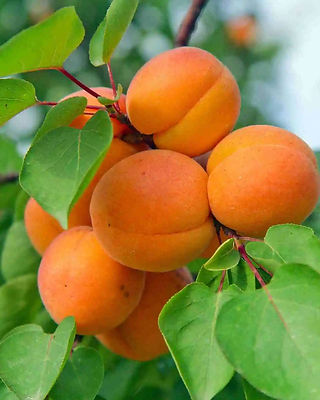
Ingredients

Apricot Oil
Apricot oil or apricot kernel oil is pressed from the kernels of the Prunus armeniaca (apricot).This light but nutritious oil is high in oleic acid (Omega 9), Antioxidants, Vitamins A and E, helping to improve elasticity, suppleness and scarring. Apricot oil is suitable for all skin types, including sensitive skin as it is light and easily absorbed. It helps to reduce inflammation, very beneficial for dry eczema and psoriasis.

Avocado Oil
Avocado oil is loaded with omega-3 fatty acids and vitamins A, D, and E. It moisturises, reduces inflammation and protects the skin with antioxidants. Helps psoriasis, eczema and acne, as well as accelerates wound healing and is a good treatment for sunburn. It can be used on the hair to improve scalp health and also used to reduce the signs of aging by improving elasticity.

Bakuchiol Oil
Bakuchiol is a natural retinol alternative, it reduces fine lines, improves skin tone and texture, and boosts collagen production with it's anti-aging applications. It is also a great option for acne-affected skin. Good Bakuchiol Oil involves a complex molecular extraction and purification process to isolate the Bakuchiol compound from the seeds so it can be used on the skin.

Beeswax
A natural wax produced by honey bees. Worker Bees discard it and the hive workers collect and use it to form cells for honey storage and larval and pupal protection within the beehive. One of the oldest raw ingredients used in skincare, beeswax forms a protective film on the skin, helping reduce water loss and locking in moisture. It is also non-comedogenic (non pore blocking) and credited with anti-inflammatory properties, making it particularly suited to sensitive skin.

Calendula
A marigold plant that has long been used for its skin health benefits. Calendula petals are rich in naturally occurring compounds called flavonoids. Calendula has been used to treat a variety of skin conditions and has also been used as a pain and inflammation reducer, as well as a way to relieve treatment-related side effects for people with cancer. It helps to protect against pollutants and photo-ageing caused by sunlight. Soothes irritation and redness, helping keep skin firm and calm.

Carrot Seed Oil
Wild carrot seed oil has exceptional anti-inflammatory & detoxifying properties. Packed full of antioxidants and rich in carotol, this oil is most effective at repairing free radical damage and protecting against premature ageing. It can help to alleviate skin conditions such as acne, eczema & psoriasis, protect against sun damage and help rejuvenate the cells, as well as providing general skin care.

Castor Oil
Cold pressed from the seeds of the Ricinus communis plant.This versatile oil is rich in fatty acids, particularly ricinoleic acid and known for its powerful purging and detoxing properties, even into the deeper layers of skin, making it an ideal skincare choice for those who suffer from mild to severe acne. it's components help to prevent harmful microbial growth, heal acne and scarring as well as stimulating the production of collagen and elastin.

Chamomile
Chamomile has been used for centuries to treat wounds and promote healing. Providing anti-inflammatory and antimicrobial properties, it can help to heal skin conditions such as psoriasis and eczema. Chamomile helps fade spots, eliminate acne scarring and fight breakouts due to its anti-inflammatory and antiseptic properties. The polyphenols and phytochemicals in chamomile are known to speed up cell regeneration.

Cocoa Butter
A type of vegetable fat that comes from cocoa beans. People have used cocoa butter for its health benefits for hundreds of years. The term cacao and cocoa are essentially the same, and the words may be used interchangeably. You can also use the term theobroma oil. Cacao and cocoa butter are extracted from Theobroma cacao beans. Moisturises and soothes, helping to heal dry cracked lips and skin and improving elasticity.

Coconut Oil (or Coconut Butter)
An edible oil derived from the wick, meat, and milk of the coconut palm fruit. Unrefined varieties have a distinct coconut aroma. Cocos Nucifera is the name of the coconut tree. So Cocos Nucifera Oil is Coconut Oil. A natural make up remover and good for hair and scalp health.

Propolis
Propolis is a natural substance collected by honey bees from trees, and is used within the hive for health and hygiene. It has been used for centuries in skincare for its many beneficial properties. Propolis is made up of resins, balsam, waxes, essential oils, pollen, amino acids, vitamins and minerals.

Shea Butter
Shea butter is fat that’s extracted from the nuts of the shea tree. Shea trees are native to West Africa, and most shea butter still comes from that region. Shea butter has been used as a cosmetic ingredient for centuries and has a high concentration of vitamins and fatty acids, soothing, and conditioning your skin. Handcrafted Shea Butter is the best, and supports millions of women across the African shea belt, and is a vital commodity in the global economy.

